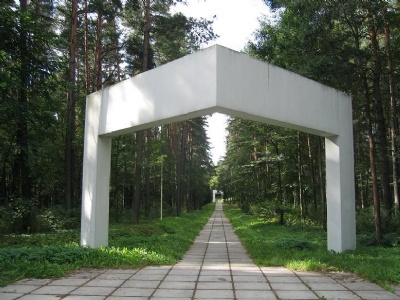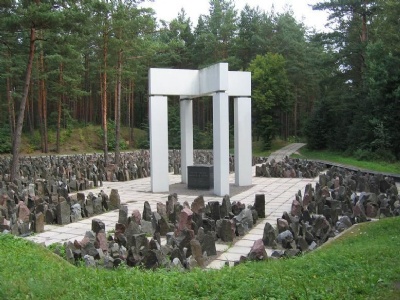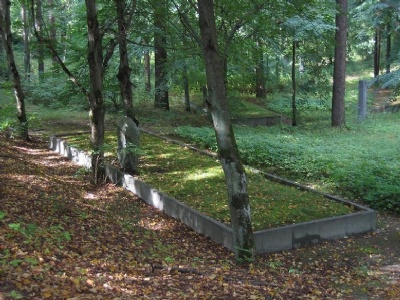Bikernieki
In eastern Riga lies a forest called Bikernieki, and there the Nazis, with the help of local collaborators, killed about 40,000 Jews between 1941 and 1944. The Jews who were murdered came mainly from the ghetto in Riga and the first executions were carried out in early December 1941. In late autumn, 1941, thousands of German Jews were deported to Latvia and the Nazis needed to make room for these in a already overcrowded ghetto. By the end of November 1941, the first executions had been carried out in another forest called Rumbula. The killings in the Riga ghetto were so extensive that a further place of killing was required. The Jews were forced to march to Bikernieki, where they had to undress and run to pre-dug pits where they were shot and buried. Later, many German Jews were murdered in both Bikernieki and Rumbula.
Current status: Monument (2007).
Location: 56°57'46.64" N, 24°12'37.41" E
Get there: Car.
Follow up in books: Arad, Yitzhak: Holocaust in the Soviet union (2009).



The fact that local collaborators assisted and actively participated in executions of Jews in Eastern Europe was nothing unique. One of the most notorious units was Sonderkommando Arajs under the leadership of SS-Sturmbannführer, Viktors Arajs. The commando participated diligently in the murder of Jews, mainly in Latvia but also in Belarus. After the war, Arajs was arrested by British forces and his involvement in massacres of Jews was indisputable by a large number of independent witnesses. Nevertheless, he was released in 1949 and could live under false name in West Germany until 1975 when he was tried for his involvement in the massacres at Rumbula. He was sentenced to life imprisonment in 1979 and died in prison 1988 in Kassel.
Another prominent figure in Sonderkommando Arajs was Araj’s adjutant, Herberts Cukurs. Cukurs had fled to Brazil already in 1946, but in 1965 he was tracked down by the Israeli security service Mossad. Then a trap was set in which an agent claimed to be a businessman managed to trick Cukurs into a meeting in Montevideo, Uruguay. At the end of February 1965, Cukurs traveled to Montevideo to meet the ”businessman”. Cukurs was tricked into a house where four other agents waited and when he stepped into the house he was assaulted and murdered.
After the fall of the Soviet Union in 1991, Cukurs has become a topic of debate in Latvia. In May 2005 opened a controversial exhibition about ”the nationalist hero Herberts Cukurs” in which his role in Sonderkommando Arajs was toned down. The fact that he was murdered illegally by Israeli agents in a neutral country has been used extensively as an argument in the rehabilitation of him.